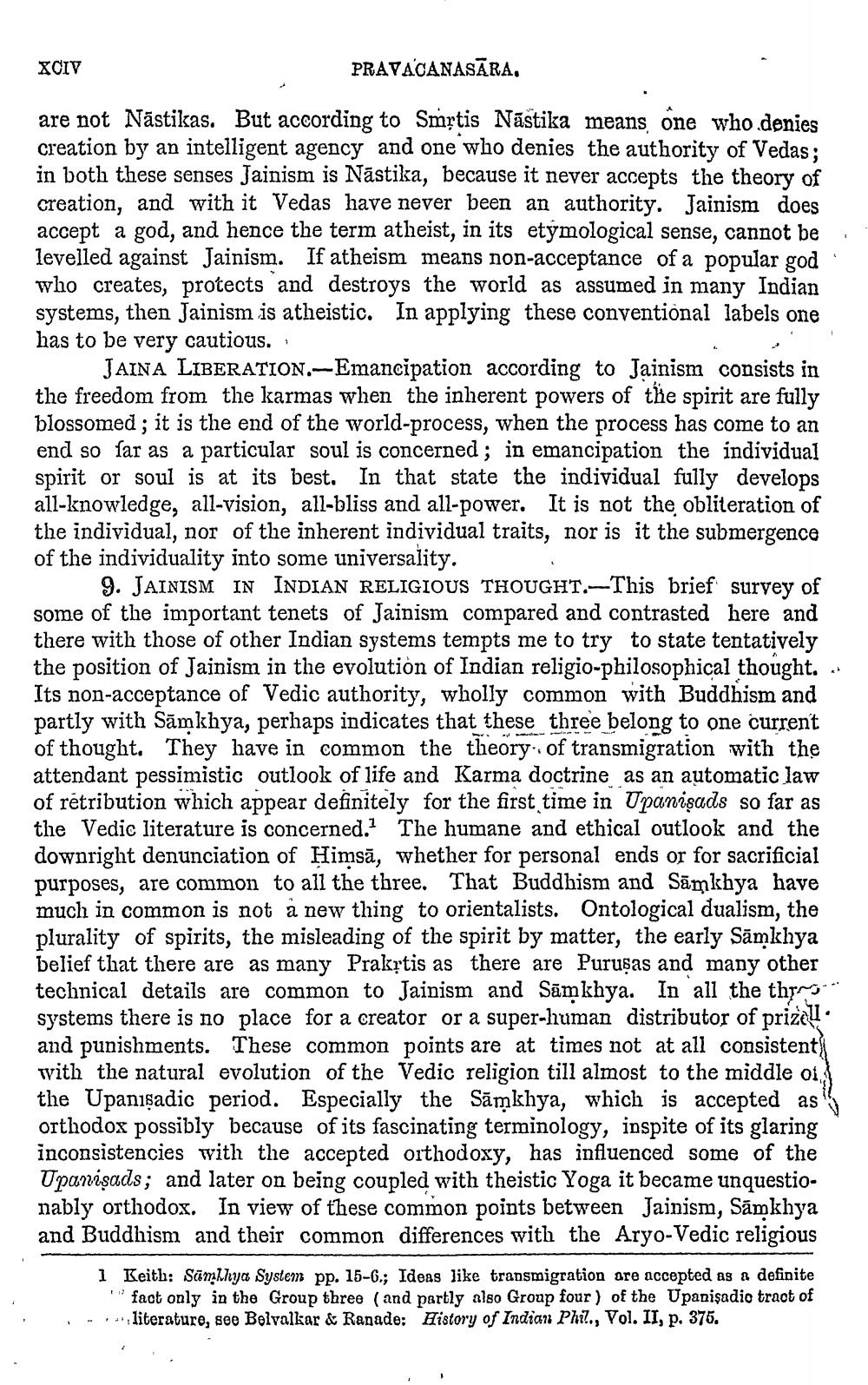________________
XCIV
PRAVACANASĀRA,
are not Nāstikas. But according to Smrtis Nāstika means, one who denies creation by an intelligent agency and one who denies the authority of Vedas; in both these senses Jainism is Nāstika, because it never accepts the theory of creation, and with it Vedas have never been an authority. Jainism does accept a god, and hence the term atheist, in its etymological sense, cannot be levelled against Jainism. If atheism means non-acceptance of a popular god who creates, protects and destroys the world as assumed in many Indian systems, then Jainism is atheistic. In applying these conventional labels one has to be very cautious. :
JAINA LIBERATION.-Emancipation according to Jainism consists in the freedom from the karmas when the inherent powers of tħe spirit are fully blossomed; it is the end of the world-process, when the process has come to an end so far as a particular soul is concerned ; in emancipation the individual spirit or soul is at its best. In that state the individual fully develops all-knowledge, all-vision, all-bliss and all-power. It is not the obliteration of the individual, nor of the inherent individual traits, nor is it the submergence of the individuality into some universality.
9. JAINISM IN INDIAN RELIGIOUS THOUGHT.-This brief survey of some of the important tenets of Jainism compared and contrasted here and there with those of other Indian systems tempts me to try to state tentatively the position of Jainism in the evolution of Indian religio-philosophical thought.. Its non-acceptance of Vedic authority, wholly common with Buddhism and partly with Sāmkhya, perhaps indicates that these three belong to one current of thought. They have in common the theory of transmigration with the attendant pessimistic outlook of life and Karma doctrine as an automatic law of retribution which appear definitely for the first time in Upanişads so far as the Vedic literature is concerned. The humane and ethical outlook and the downright denunciation of Himsā, whether for personal ends or for sacrificial purposes, are common to all the three. That Buddhism and Sāmkhya have much in common is not a new thing to orientalists. Ontological dualism, the plurality
of spirits, the misleading of the spirit by matter, the early Sāmkhya belief that there are as many Prakrtis as there are Purusas and many other technical details are common to Jainism and Sāmkhya. In all the thys* systems there is no place for a creator or a super-human distributor of prize and punishments. These common points are at times not at all consistent with the natural evolution of the Vedic religion till almost to the middle oi. the Upanisadic period. Especially the Sāmkhya, which is accepted as orthodox possibly because of its fascinating terminology, inspite of its glaring inconsistencies with the accepted orthodoxy, has influenced some of the Upanişads; and later on being coupled with theistic Yoga it became unquestionably orthodox. In view of these common points between Jainism, Samkhya and Buddhism and their common differences with the Aryo-Vedic religious
1 Keith: Sümhhya System pp. 15-6.; Ideas like transmigration are accepted as a definite
fact only in the Group three (and partly also Group four) of the Upanişadio tract of .. literature, see Belvalkar & Ranade: History of Indian Phil., Vol. II, p. 375.




